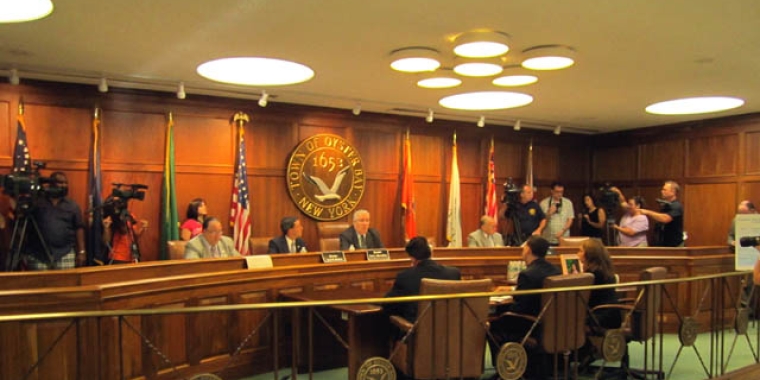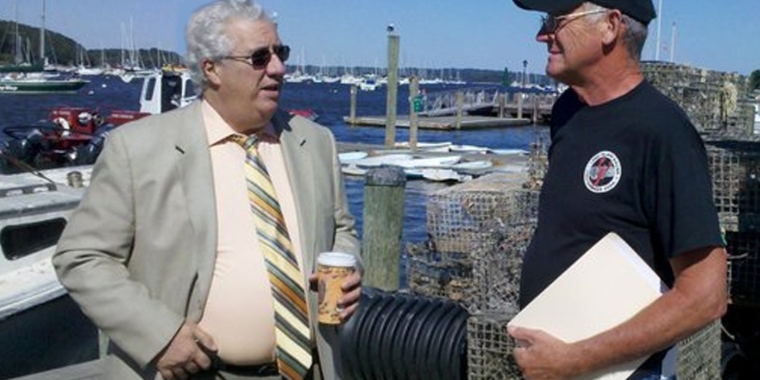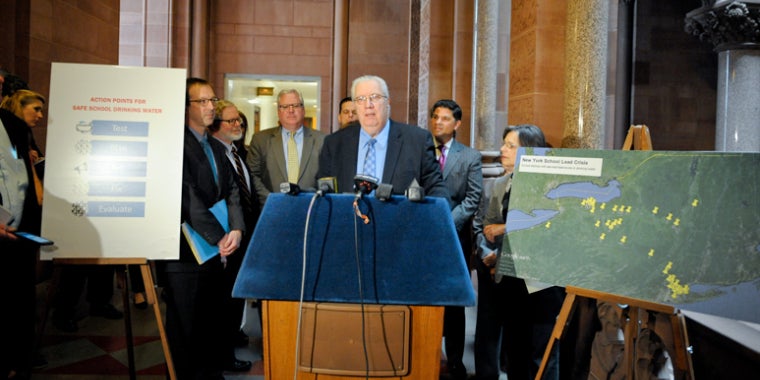
SENATOR MARCELLINO KEEPING OUR WATERS SAFE

Senator Carl L. Marcellino along with members of the Senate Standing Committee on Investigations and Government Operations, held a hearing to examine the current laws and regulations on boating safety in New York State and whether changes are necessary to protect the public on our waters.
“As of late there has been tremendous interest in maritime safety. Many opinions have been expressed and legislators on the Federal, State and Local levels have introduced legislation to change or add to our current laws. This hearing gave us an opportunity to speak to the experts on maritime law and to the boaters in our communities so we may make informed decisions,” said Senator Marcellino
Recreational boating has and continues to be an important part of New York State’s recreational landscape. In fact, New York State is a leader in the number of vessels registered with almost 480,000 registered boats and many other vessels that do not require registration.
The New York State Office of Parks, Recreation and Historic Preservation, along with the United States Coast Guard Auxiliary and United States Power Squadron provides boaters of New York State with approved boating education courses that are recognized in all fifty States and Canada.
Currently in New York State a boating safety course is only mandatory for young people between 10 and 18 years of age or anyone operating a personal watercraft such as a Jet Ski. In New York’s neighboring States safety course are required. All boaters on New Jersey's waters are required to carry the New Jersey Boating Safety Certificate when operating any powered vessel over 12 ft., and in Connecticut, residents are required to take a safety course for all boats over 19.5 ft.
According to the US Coast Guard, each year hundreds of lives are lost, thousands are injured and millions of dollars of property damage occur on U.S. waterways because of preventable recreational boating accidents, 70% is because of operator error.
“The statistics show that no matter where you are boating, following boating safety, being properly prepared and equipped can help save many lives. By working together, we will educate the public, help reduce boating accidents and work to keep everyone safe,” said Senator Marcellino
United States Coast Guard
Recreational Boating Statistics 2011
In 2011, the Coast Guard counted 4588 accidents that involved 758 deaths, 3081 injuries and approximately 52 million dollars of damage to property as a result of recreational boating accidents.
· The fatality rate was 6.2 deaths per 100,000 registered recreational vessels. This rate represents a 14.8% increase from 2010’s fatality rate of 5.4 deaths per 100,000 registered recreational vessels
· Compared to 2010, the number of accidents decreased 0.35%, the number of deaths increased 12.8% and the number of injuries decreased 2.3%
· 70% of all fatal boating accident victims drowned and of those 845 were not reported as wearing a life jacket.
· Only 11% of the deaths occurred on boats where the operator had received boating safety instruction. Only 7% of deaths occurred on vessels where the operator had received boating safety instructions from a National Association of State Boating Law Administrators (NASBLA) approved course provider.
· Eight out of every ten boaters who drowned were using vessels less than 21 feet in length
· Operator inattention, improper lookout, operator inexperience, excessive speed and machinery failure rank as the top 5 primary contributing factors in accidents.
· Alcohol use is the leading contributing factor in fatal boating accidents; it was listed as the leading factor in 16% of the deaths.
· Fifteen children under age 13 lost their lives while boating in 2011. 60% of the children who died in 2011 died from drowning. 78% of those who drowned were wearing a life jacket as required by State and Federal law.
· The most common types of vessels involved in reported in accidents were open motorboats (47%) personal watercraft (19%) and cabin motorboats (14%).
· The 12,173, 935 recreational vessels registered by the states in 2011 represent a 2.1% decrease from last year when 12,438,926 recreational vessels were registered.


